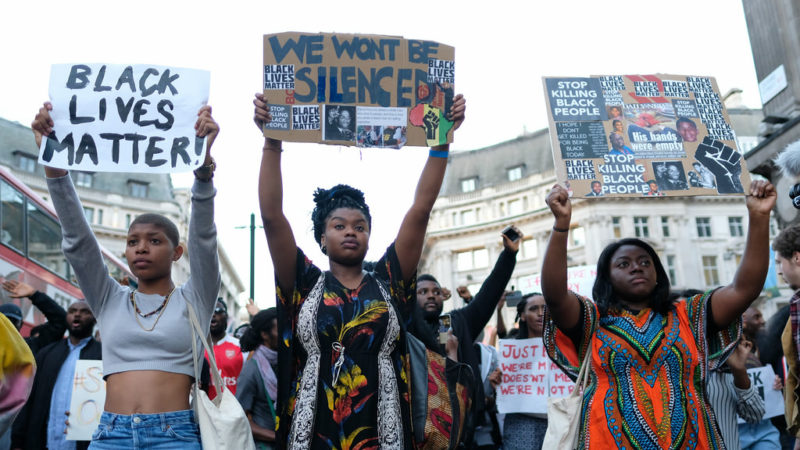Relations between police and black communities are at a shocking low. The government must now publish its delayed report into deaths in police custody.

The disturbances in East London’s Dalston over the death of Rashan Charles show that community relations between the police and the black community are at an all-time low.
The protest was not a spontaneous incident occurring in the heat of the summer – the tensions have been building.
The recent deaths of Edir ‘Edson’ Frederico Da Costa and Rashan Charles, during or following police custody, have pushed many to boiling point and anger is spilling out onto the streets.
Frustration among the black community against deaths of black people in police custody have been publicised by Black Lives Matter, and there have been several deaths of black people in or following police custody in the last few years, notably Sean Rigg and Olaseni Lewis. But plausible explanations, transparency and justice has been slow to follow.
Grievances against the police by the black community go deeper. It would be naïve for us to ignore the cumulative impact on the black community of discriminatory stop and search practices (with black people six times more likely to be stopped and searched compared to their white counterparts) and arrest rates, with black young people three times more likely to be arrested for crimes than white young people.
These police practices, alongside the disproportionate number of deaths of black people in or following police custody, have highlighted how the police have struggled with getting the balance right between protecting the black community with policing the black community.
Inquest verdicts into the deaths of black people in or following custody highlight grave concerns around the use of “excessive, disproportionate or unreasonable force” being used by police in restraint techniques. There is a gap between policy and practice in control and restraint techniques how it is carried out by rank and file officers.
But we must not fall into the trap of thinking that closing the gap in restraint training would reduce the racial disparities in the policing of the black community as the source of these problems are much more endemic.
At the same time, we need to acknowledge that the police are not working in a social vacuum and the impact of the austerity cuts – on communities but also within the police – have taken a toll on crime rates as well as policing practices. Violent crime is up, the largest in a decade.
But these crime figures don’t come out of nowhere and we cannot pretend that the £400m cuts to youth services between 2010 to 2016 (with more than 12,700 places for young people lost in London alone) and the abolition of Education Maintenance Allowances for 16-18 year olds in education or training have not had an adverse impact on crime rates or offering young people routes out of crime.
And with police numbers being their lowest in 30 years it is no wonder that the police are struggling to control the violence. There are now fewer police officers on the streets, and fewer community police officers sourcing local intelligence and building trusting relationships.
That means that there are fewer police officers intervening early in gang or heated domestic conflicts and fewer police officers to de-escalate and divert potentially violent situations into more calmer resolutions.
There is no doubt that some of the discriminatory policing practices, and events leading up to some of the deaths of black people in custody, are a result of endemic or unwitting racism.
It is shocking that the recommendations from the 1999 Macpherson report have not appeared to filter through into the practices of rank and file police officers dealing directly with black and ethnic minority communities.
And it’s also of grave concern that police forces, including the Metropolitan police force, are on average much less ethnically diverse than the areas that they serve and a white applicant has a better chance of getting a job in the police than a similar qualified ethnic minority equivalent.
Racial disparities between the police and the communities they serve, cultural awareness and unconscious bias training all matter in ethnically diverse societies.
Now it’s vital the government publish the delayed report into deaths in police custody, commissioned by Theresa May in 2015, and which The Runnymede Trust and 30 other organisations have been urging the government to make public.
Doing so would not only inform the police about what they’re doing wrong in events leading up to deaths in police custody, it would also reduce the suspicion from BME communities that there is a ‘cover up’ around deaths in police custody.
Dr Zubaida Haque is research associate at the Runnymede Trust.




One Response to “The Rashan Charles protests show it’s time for action on deaths in police custody”
clive pritchard
1500 deaths in custody and not one copper held to account.
The deaths will stop when cops know they will be held to account.